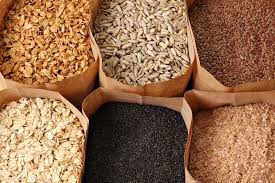A cholesterol test has several components, one of which is HDL (high-density lipoprotein), which is often referred to as “good” cholesterol. HDL is thought of as the healthy cholesterol because it removes excess bad cholesterol (LDL) from your body. Men should aim for an HDL of > 1.1 and women > 1.3, or the value recommended by your doctor.
Higher HDL = Lower heart disease risk
Here are 5 tips to help raise your HDL cholesterol:
1. Eat more foods high in monounsaturated and omega-3 fats
•ex: soy foods, seeds, nuts, ground flax, fish, seafood, canola and olive oils
2. Eat more plant protein
•ex: chickpeas, lentils, split peas, beans, soy milk, tofu
3. Eat more vegetables and fruits
•Aim for 4 vegetables and 3 fruits per day
•1 serving= ½ cup cut up raw or cook fruits/vegetables OR 1 cup of salad greens OR 1 tennis-ball size fruit/vegetable
4. Avoid foods containing trans fats
• ex: commercial baked goods, hydrogenated margarines, deep-fried foods
• Look for 0% trans fat of the Nutrient Facts Table
5. Be more active
•Aim for 60 minutes of exercise per day including aerobic activities (i.e. swimming, walking) and resistance training (i.e. weight lifting)
HEALTH TALK REMINDER: NEW YEAR, NEW YOU–Nutrition and Exercise Tips for Weight Loss is coming up tomorrow, Saturday January 18th at 12:30pm in the aerobics studio at Club Markham with Registered Dietitian Anna Gofeld & Personal Trainer Akhil Dawda. Don’t forget to reserve your spot at Form and Function front desk by phone 905-604-9355 or e-mail reception@formfunctionclinic.com.
SEE YOU TOMORROW


